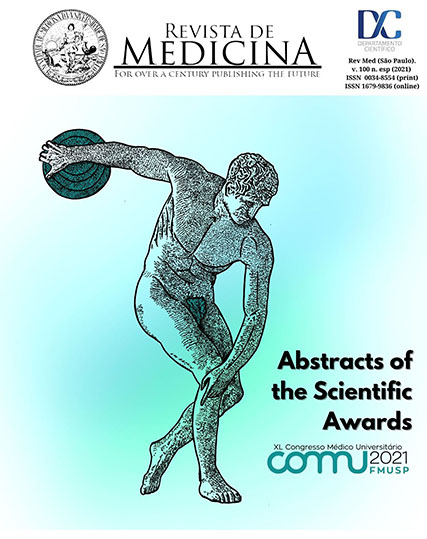DBS treatment in an 18-year-old with refractory dystonia due to DYT1 mutation: a case report
DOI:
https://doi.org/10.11606/issn.1679-9836.v100iespp19-19Palavras-chave:
DYT1, Dystonia, Deep brain stimulation, Case reportResumo
Introduction: The term dystonia may be defined by abnormal involuntary movements or postures due to sustained or intermittent muscle contractions. One of the most common aetiologies of isolated dystonia is due to the mutation in DYT1 gene, resulting in a disorder of abnormal regulation of gene transcription and neuronal circuit development. Of all the patients with this mutation, about 30-40% will develop symptoms of the disease. Typically, the clinical manifestation of this type of dystonia will begin from the first to third decade of life, with generalized distribution, and involving more likely the lower limbs or, less frequently, the upper limbs and trunk. Objective: To present a case of an infrequent refractory dystonia due to DYT1 gene mutation in an 18-year-old male patient that was later treated with Deep Brain Stimulation (DBS). Case report: Here we report about the case of a 18-year-old male patient affected by torsion dystonia of the neck and a segment of the upper limbs. He first exhibited symptoms when he was 15 years old and, since then, has had a series of complications, such as severe pain and recurrent pneumonia. Genetic analysis identified a DYT1 gene superexpression mutation. Previous therapies had included physiotherapy, botulinum toxin injections, drugs such as primidone and clonazepam, but all with little improvement. Due to the patient's severe torsion dystonia on his right side, it was decided to implant a DBS only in the left internal globus pallidus (GPi) posteromedial area, in a brain surgery with general anesthesia that took place in March 2018. After 10 months, the same procedure was made in the right GPi, at the subthalamic nucleus, aiming to treat his dystonic tremors located in the left part of the body. The electrodes inserted were Medtronic® 3389 and the generator was Activa RC rechargeable, with 0.5 mm spacing. The following programming was set: current of 3 mA, frequency of 130 Hz and pulse width of 90 μs. The battery of the electrode was inserted in the right side of the chest due to the patient's more severe torsion. The post-operative (PO) was successful, without any deficit, being discharged from the hospital at the PO day 4 in the first surgery and day 2 and in the second. After a 2-year follow-up period, the patient presents a normal life compared to the average of his age, without any of the symptoms or complications he had before. He regularly attends physiotherapy and fitness centres to maintain muscle training.
Downloads
Downloads
Publicado
Edição
Seção
Licença
Copyright (c) 2021 Camilla Caetano Alves da Motta, Bruna Marques Lopes, Ana Flavia Calvo, Katharina Leal Goto, Katharina Leal Goto, Pedro Henrique Simm Pires de Aguiar, Nilton Alves Lara Junior, Paulo Henrique Pires de Aguiar

Este trabalho está licenciado sob uma licença Creative Commons Attribution-ShareAlike 4.0 International License.




